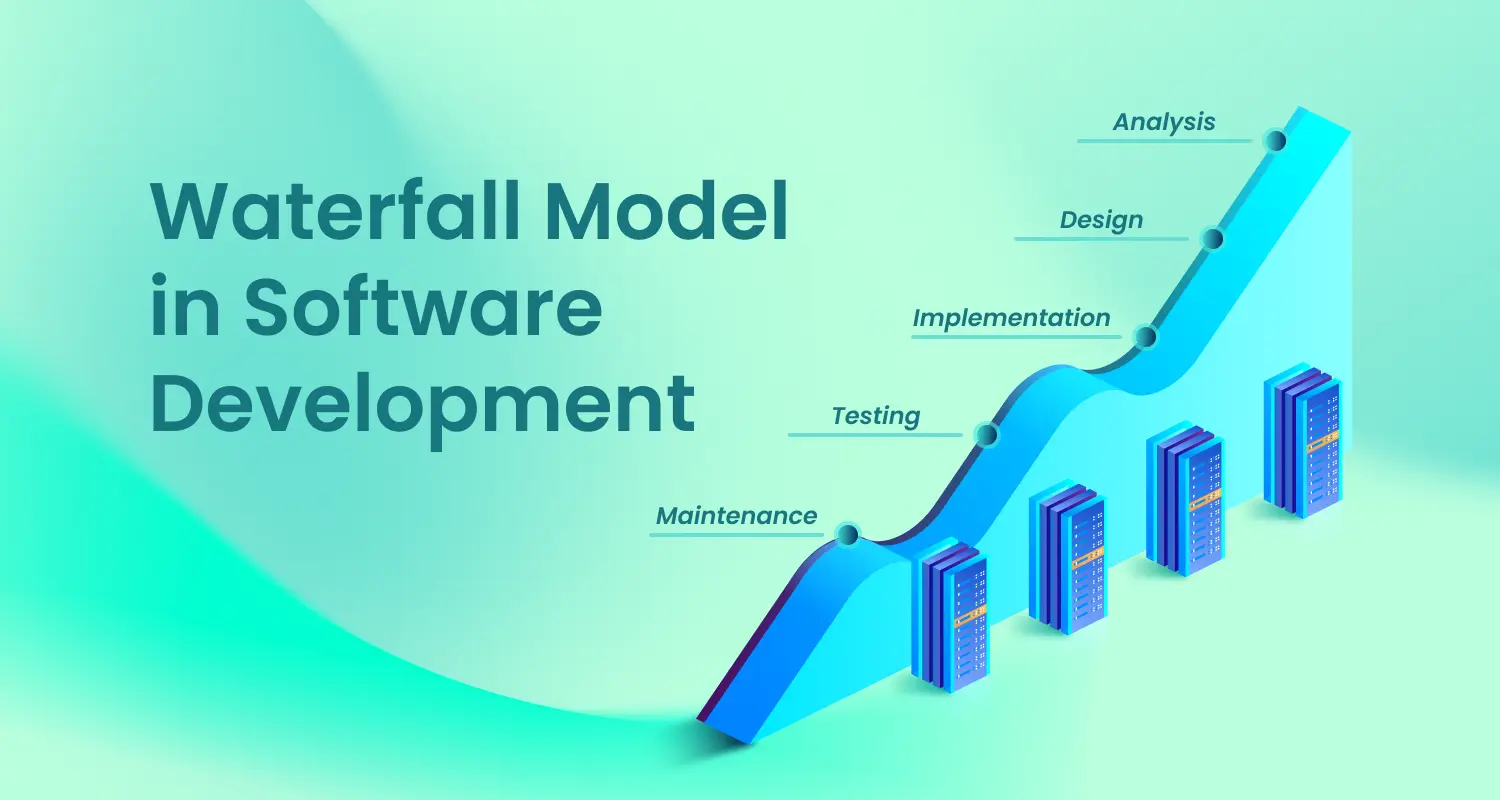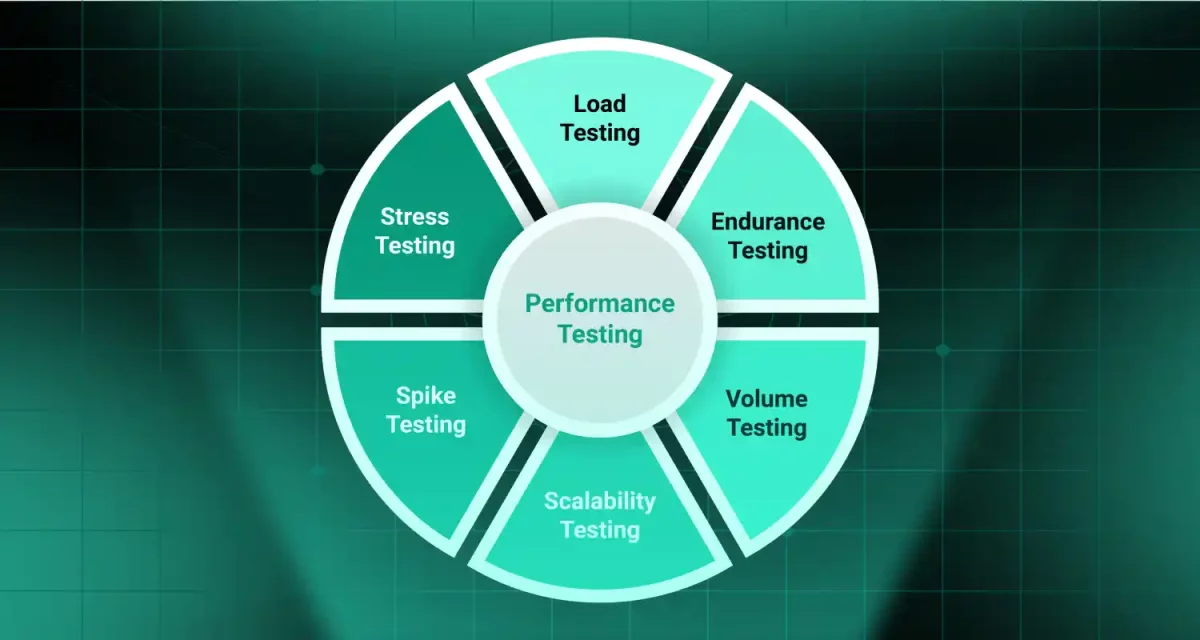
The Waterfall model software development methodology has been one of the most fundamental approaches in the software development life cycle (SDLC). Known for its structured and sequential design, this model provides a clear framework for software engineering projects, ensuring each phase is completed before progressing to the next.
For decades, businesses and development teams have used the Waterfall model in software engineering to manage projects with well-defined requirements. While modern agile methodologies have gained traction, the Waterfall software development process remains viable in specific scenarios. Understanding its phases, benefits, and drawbacks can help businesses and project managers decide when to apply it effectively.
1. What is the Waterfall model in software engineering?
The Waterfall model software development methodology follows a linear development process, ensuring each phase is completed before moving to the next. Unlike iterative approaches like Agile, Waterfall does not allow revisiting previous phases once completed. Winston W. Royce presented this model in 1970, and it has become prevalent in sectors requiring disciplined development processes.
Key characteristics of the Waterfall model:
- Sequential Structure: Every stage follows a strict order.
- Extensive Documentation: Emphasizes detailed planning and documentation.
- Defined Phases: Each step must be completed before proceeding.
- Minimal Flexibility: Changes are challenging to implement mid-process.
2. The stages involved in the Waterfall model for software development
Understanding the phases of the Waterfall model in software development is crucial for implementing it correctly. Each stage follows a sequential order, ensuring that software engineering projects are carried out in a structured and predictable manner.
Unlike Agile, where iterations allow continuous changes, the Waterfall methodology follows a fixed plan, making it essential to complete each phase before moving to the next.
2.1. Requirements gathering

The first step involves collecting and documenting all project requirements. This phase focuses on understanding business objectives, technical specifications, and functionality expectations. Requirements gathering is essential for defining the project scope and ensuring alignment between stakeholders and the development team.
Key activities in this phase include:
- Conducting stakeholder interviews and brainstorming sessions.
- Documenting functional and non-functional requirements.
- Creating a software requirement specification (SRS) document.
- Reviewing and validating requirements to avoid scope creep.
Proper documentation ensures that the Waterfall model in software engineering follows a well-defined approach, reducing ambiguities during development.
2.2. System design
Following the completion of the requirements stage, the system design process commences. Architects and engineers create detailed blueprints outlining the technical architecture, software framework, and database design.
This phase involves:
- Defining system components and interactions.
- Establishing UI/UX design prototypes.
- Selecting appropriate technologies and tools for development.
- Planning security measures and scalability options.
Since the software development life cycle waterfall model follows a structured flow, system design is critical in ensuring smooth execution in the following stages.
2.3. Implementation
The implementation phase is where actual coding takes place. Developers follow the pre-defined specifications and coding guidelines to build the software. The Waterfall software development process dictates that all functionalities be developed sequentially without iteration.
Key aspects include:
- Writing clean, modular code following best practices.
- Integrating various components and subsystems.
- Conducting initial testing at the development level.
- Version control and code repository management.
The linear structure of the Waterfall method software development ensures that coding follows a pre-planned roadmap, reducing the risk of mid-project deviations.
2.4. Testing

Testing is a crucial step in the software development life cycle waterfall model, ensuring that the developed software meets business and functional requirements. Quality assurance teams conduct multiple testing phases, including:
- Unit testing: Checking individual components for functionality.
- System testing: Verifying that different modules integrate seamlessly.
- Performance testing: Evaluating speed, scalability, and stability.
- User acceptance testing (UAT): Ensuring the final product meets user expectations.
Since the Waterfall approach does not allow changes after development, rigorous testing is essential to prevent post-deployment failures.
2.5. Deployment
After successful testing, the software is deployed for end-user access.
This phase involves:
- Installing and configuring software on production servers.
- Running final system checks and monitoring performance.
- Training end-users and providing user manuals.
The Waterfall model software development for large projects is often preferred by industries requiring strict compliance and stability, such as healthcare, banking, and government sectors.
2.6. Maintenance
Once deployed, the software requires ongoing maintenance to ensure security and functionality. The maintenance phase includes:
- Bug fixes and performance optimizations.
- Security patches to address vulnerabilities.
- Regular updates and feature enhancements.
Unlike Agile, where frequent iterations allow continuous development, the Waterfall model software development process focuses on maintaining stability with fewer major updates post-deployment.
3. Advantages of the Waterfall model in software development

Despite the growing popularity of Agile methodologies, the advantages of the Waterfall model in software development make it a preferred choice for projects with well-defined goals and minimal expected changes. This traditional model offers several benefits, particularly for industries requiring structure, documentation, and predictability.
3.1. Clear structure and defined stages
One of the most substantial benefits of the Waterfall method software development approach is its structured flow. Each phase, requirements gathering, system design, implementation, testing, deployment, and maintenance, is clearly defined and follows a sequential order. This structure allows:
- Project managers monitor progress efficiently.
- Development teams work with a clear roadmap.
- Quality assurance teams will validate each phase before proceeding.
This clarity helps organizations stay on track, ensuring project completion within the estimated timeline.
3.2. Easy to manage and document
A key advantage of the Waterfall model software development process is its extensive documentation. Since each phase is completed before moving to the next, records of requirements, system architecture, and test cases are well-maintained. Documentation is beneficial for:
- Regulatory compliance: Industries like healthcare, finance, and government require strict documentation to meet compliance standards.
- Knowledge transfer: Comprehensive records ensure smooth handovers between development teams, engineers, and project managers if staff changes occur.
- Project tracking: Defined milestones and deliverables help stakeholders review progress and avoid delays.
Due to its structured documentation process, the Waterfall model in software engineering remains a practical choice for businesses operating in highly regulated sectors.
3.3. Works well with fixed requirements
Projects with stable and well-defined requirements benefit significantly from the Waterfall approach. Unlike Agile, where changes are frequent, the Waterfall software development process follows a strict plan. This model is ideal for:
- Government and defense projects, where security and compliance standards are critical.
- Manufacturing and embedded systems, where precise functionality must be built without modifications.
- Enterprise software solutions, where large-scale implementations require consistency.
By finalizing requirements upfront, businesses can avoid unnecessary rework, ensuring that the software development life cycle waterfall model delivers predictable results.
4. Disadvantages of the Waterfall model in software development

While the Waterfall methodology is effective in structured environments, it has some notable drawbacks that limit its adaptability, especially in fast-changing industries.
4.1. Lack of flexibility
The rigid nature of the software development life cycle waterfall model makes it difficult to accommodate changes once a phase is completed.
Since each stage is dependent on the previous one, altering requirements mid-project requires reworking multiple phases. This can result in:
- Increased costs due to rework and adjustments.
- Delays in deployment, pushing project deadlines further.
- Frustration among development teams, especially when end-user needs evolve.
The Waterfall model software development pros and cons for software products requiring rapid iterations indicate that a more flexible approach like Agile may be preferable.
4.2. Difficult to revise previous stages
The sequential nature of the Waterfall method software development process makes it challenging to revisit earlier phases once they are completed. Any errors or miscalculations in requirements gathering or system design can lead to:
- Higher project failure risks, especially if requirements were not accurately captured.
- Extended development timelines, as fixing issues may require restarting entire phases.
- Lower adaptability to market changes, making the final product outdated by the time it launches.
This limitation makes Waterfall less suitable for modern applications where user feedback and evolving requirements play a significant role.
4.3. Not suitable for evolving projects
For software applications requiring continuous updates and evolving functionalities, the Waterfall model’s linear approach can be restrictive.
Businesses that rely on user feedback, iterative improvements, or incremental feature rollouts often find Agile development more effective.
Comparing Waterfall vs Agile methodology in software development, the key limitations of Waterfall include:
- Slower response to market changes: Once a product is launched, making significant modifications is brutal.
- Limited customer involvement: Unlike Agile, where clients can provide input at each iteration, Waterfall only allows feedback post-development.
- High risks for long-term projects: Agile offers better adaptability in dynamic industries like e-commerce, SaaS, and mobile apps, where customer preferences shift frequently.
While the importance of the Waterfall model in software development remains significant for structured projects, businesses operating in a fast-paced environment often prefer Agile due to its flexibility and faster time-to-market.
5. When to use the Waterfall model in software engineering
Determining when to use the Waterfall model in software engineering depends on the nature of the project, its scope, and the stability of its requirements. While many modern businesses adopt Agile, Waterfall remains an ideal choice for specific projects due to its structured approach and emphasis on thorough documentation.
5.1. Ideal scenarios for using the Waterfall model
Projects with clearly defined requirements: If a project’s requirements are well-established from the start and unlikely to change, the Waterfall model software development approach ensures smooth execution with minimal disruption.
- Shorter, well-defined projects: For small-scale projects with limited complexity, the Waterfall software development process provides clear milestones and a straightforward development path.
- Industries requiring strict documentation: Sectors such as healthcare, finance, and government rely on the Waterfall software development method due to regulatory compliance needs and the necessity for extensive documentation.
- Projects with minimal uncertainty: If a project has well-understood objectives and a predictable development process, the software development life cycle Waterfall model ensures systematic execution and reduces risks associated with scope changes.
- High-stability projects: Applications requiring thorough planning, testing, and deployment benefit from the Waterfall model in software engineering due to its linear nature, ensuring minimal errors and a well-documented process.
5.2. Applications of the Waterfall model in software development

The Waterfall model software development for large projects remains relevant across various industries where structured processes and well-documented methodologies are essential.
- Healthcare software development: The Waterfall model software development is widely used in the healthcare industry due to strict regulatory requirements, ensuring software compliance with legal and medical standards.
- Government and aerospace projects: Given their complexity and the need for meticulous documentation, government IT systems and aerospace software development often rely on the Waterfall software development process for risk management and consistency.
- Banking and financial systems: The Waterfall method software development is ideal for financial applications that require high security, stability, and compliance with industry regulations.
- Enterprise resource planning (ERP) solutions: Large-scale ERP implementations benefit from the structured approach of the Waterfall model software development, ensuring well-defined modules and seamless integration.
- Manufacturing and embedded systems: Industries that rely on embedded software for hardware operations use the Waterfall model in software engineering for detailed design and implementation phases.
6. Waterfall vs Agile methodology in software development
The Waterfall vs Agile methodology in software development discussion remains relevant as businesses analyze their specific project needs. While Agile is widely used for dynamic and evolving projects, the importance of the Waterfall model in software development remains significant for structured projects that require careful planning and rigorous documentation.
| Feature | Waterfall Model | Agile Model |
| Development approach | Sequential: each phase is completed before moving to the next. | Iterative: development occurs in small, continuous cycles. |
| Flexibility | Low: changes are difficult to implement once a phase is completed. | High: easily adaptable to evolving requirements. |
| Documentation | Extensive: detailed records are maintained throughout the process. | Minimal: focus is on working software rather than extensive documentation. |
| Project changes | Difficult: modifying requirements or design mid-project is costly and time-consuming. | Easy: changes can be made at any stage based on feedback. |
| Best suited for | Well-defined projects with stable requirements, such as government, healthcare, and financial systems. | Dynamic projects where requirements evolve, such as software products, mobile apps, and startups. |
7. Conclusion
The waterfall model software development methodology provides a structured, linear approach to project management. While it offers advantages regarding clear documentation and defined phases, it also has limitations regarding flexibility and adaptability.
Understanding the waterfall software development process helps project managers and developers determine when this methodology best fits. Waterfalls remain valuable for projects with fixed requirements, well-defined goals, and strict regulatory compliance.
However, Agile might be a more suitable alternative for dynamic and evolving projects.




